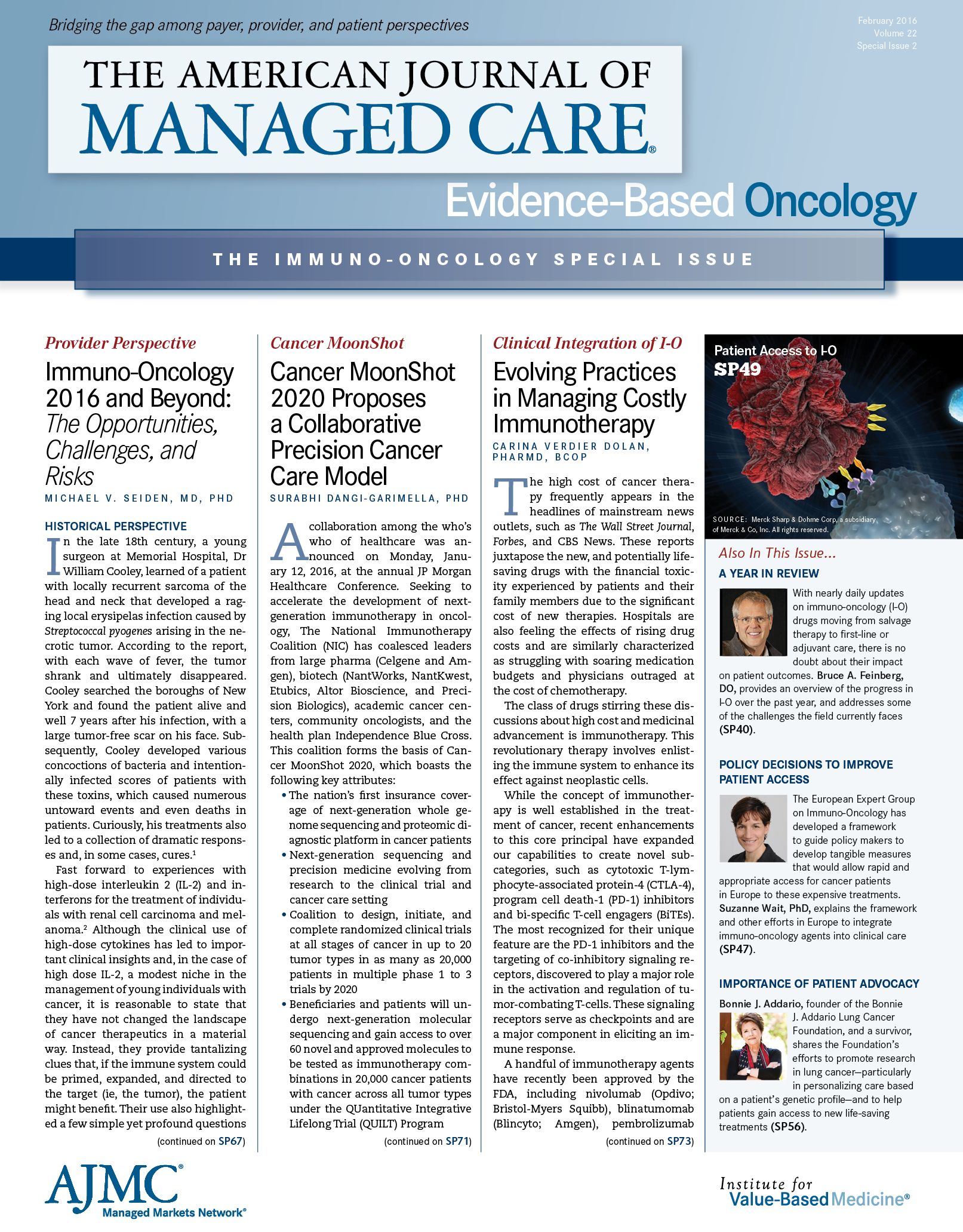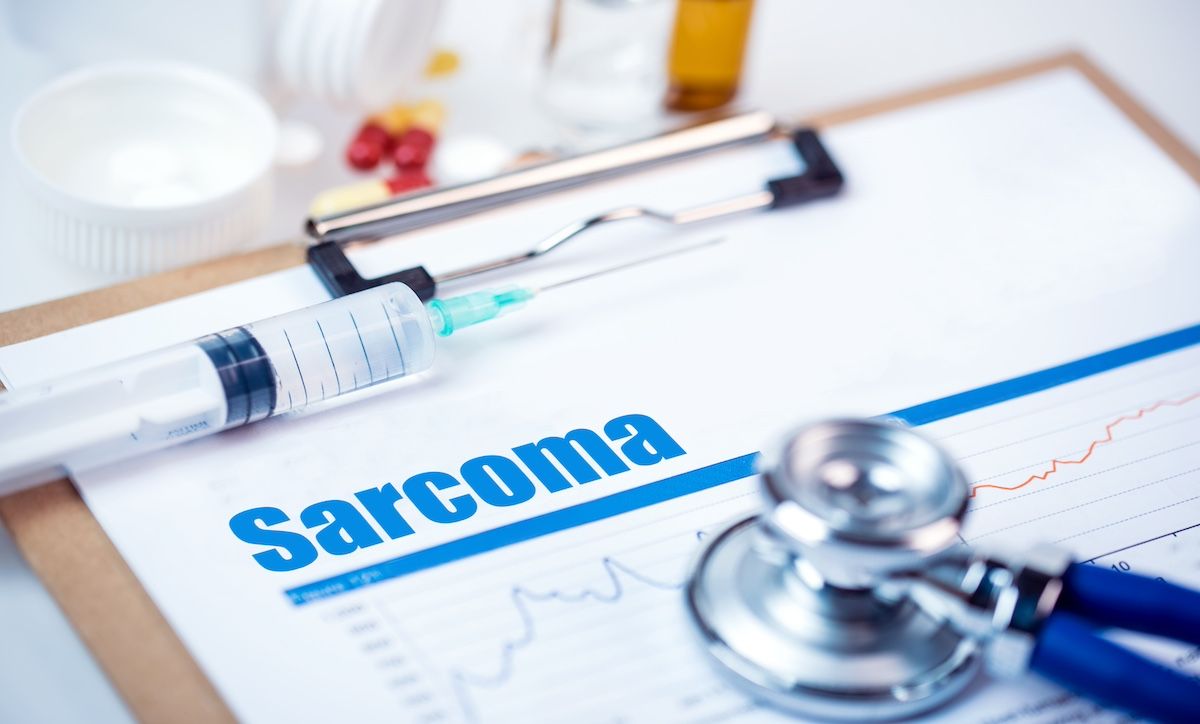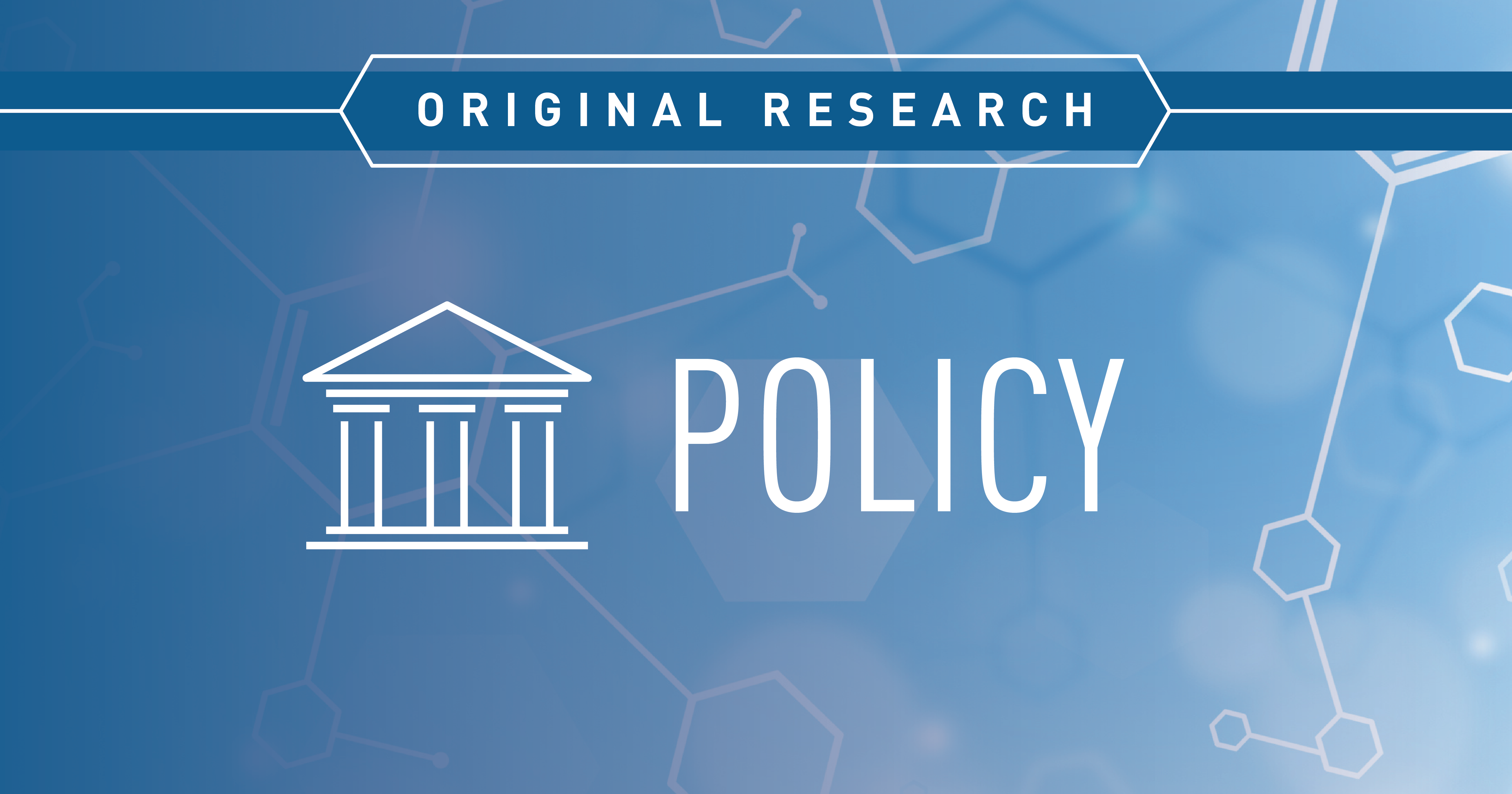Publication
Article
Evidence-Based Oncology
Patient Assistance: Implementing Preventative Steps to Ensure Financial Wellness
Author(s):
An overview of patient assistance programs at Smilow Cancer Hospital at Yale-New Haven, including their innovative hospital-based explanation of benefits form, which can eliminate patient responsibilities and help expedite the turnaround times for payment processing with copay assistance.

The Oncology Medication Assistance Program (MAP) at Smilow Cancer Hospital at Yale-New Haven was created with a 2-fold vision model. The purpose was to help patients with elevated drug cost expenses associated with chemotherapy treatments while also protecting the hospital from potential write-offs. The current model utilizes manufacturer-sponsored drug replacement and co-pay assistance programs in an attempt to reduce the financial burden of drug-related expenses for patients and providers.
The uninsured patient, or off-label—use patient, being treated with the newer immuno-oncology (IO) drugs can easily have a negative impact on a hospital’s pharmacy budget. The use of pharmaceutical-sponsored drug-replacement programs can offset the potential write-offs by aiding in the recovery of medications. The resulting win-win effect of drug recovery is one in which both the patients and providers have no financial drug liability and the patient is treated with the provider’s preferred course of therapy.
In an innovative attempt to create a best practice model, Smilow Cancer Hospital at Yale-New Haven has reached out to pharmaceutical industry leaders to enlighten and educate them on real-life patient experiences and obstacles. Removing barriers and enhancing financial eligibility criteria has remained one of our priorities. The utilization of co-pay programs designed for community practices has always been a unique challenge within major institutions. One such innovative practice model was the use and acceptance of the hospital-based explanation of benefits (EOBs) form. These forms can be used in place of the patient’s mailed EOB, which essentially removes the liability from patients having to manage on their own. Institutional EOBs usually can be generated the day the payer’s reimbursement has been processed. This best-practice model has eliminated patient responsibilities and has assisted in expediting the turnaround times for payment processing with co-pay assistance.
Reimbursement Obstacles
The fast-pace challenge that comes from utilizing the new IO drugs can be observed through payer reimbursements. Some of these newly approved medications do not require prior authorization (PA) and the misconception is that they are being covered. Months later, however, the business office realizes that the payer has not covered the claim. The appeal process is initiated, and the patient continues treatment while in financial limbo. One way to avoid this situation is to use the Industry Sponsored Benefits Verification (BV) Form prior to treatment. Utilization of BV forms would identify drug coverage and patients’ out-of-pocket (OOP) costs. Medicare patients are also identified for foundation co-pay assistance, such as through the Patient Advocate Foundation and Patient Access Network Foundation. Best-practice models would be to enroll all patients with financial issues into these sponsored programs as a precautionary measure, considering the programs have limited look-back periods, some as little as 30 days.
With more patients facing OOP expenses since the implementation of the Affordable Care Act, there has been a greater need for patient assistance. The 2015 Genentech Oncology Trend Report noted that only 26.7% of patient OOP expenses were collected in the oncology setting.1 The remaining 73.3% of unrecovered co-pays can represent a significant financial burden on an institution’s financial reports. Financial losses to the institution, as well as patient financial toxicity, could become greater if OOP expenses continue to increase in the coming years.
Financial Barriers
Today’s oncology patient has many cost barriers that can easily affect their financial stability at the very beginning of their treatments. Being aware of your patient’s financial health during treatment is important because it can have a significant impact on their compliance with respect to medication and the continuation of care. In 2013, the average OOP expense of a commercially insured patient’s intravenous oncology medication was $5643 and the oral oncolytic OOP expense was $2838.2 Additionally, when a patient begins treatment, there are additional nonmedical financial expenses that can add to the financial stress, such as costs associated with transportation, gas, and parking. Additional costs to consider are possible child or adult care, meals, nutritional modifications, and reduced employment wages. By themselves, these non-medication stressors can cause a patient and family to slide into a state of financial vulnerability.
Real Life Examples
The new reality of healthcare coverage cost and large OOP expenses are changing the financial landscape for many middle class Americans. Let’s take a look at the costs associated with a new exchange patient in the state of Connecticut. The scenario is a family of 4 (consisting of 2 adults and their 2 teenage children). The family has an annual income of $60,625, which is equivalent to 250% of the 2015 federal poverty level (FPL). The plan purchased is an Anthem Blue Cross Blue Shield Silver PPO Pathway X Multi State Plan. The monthly premium cost is $458.463 or $5501.52 annually, representing 8.8% of the family’s gross income. The newly insured member also has a maximum family deductible and OOP cost of $9400 per calendar enrollment year, which is 15% of their gross income.
The family may feel protected until a single or series of events challenges that perspective. With an unexpected cancer diagnosis along with other unanticipated events, it would be easy for this family to reach their maximum deductible and OOP expenses in just a few months. The annual cost of premiums, in addition to the OOP, could easily become 23.8% of the family’s gross income. If one of the family members commences treatment or there are additional family events in the last quarter of the year, it is possible for them to reach $18,800 in deductibles and OOP expenses in a 5-to-6 month time frame. This financial threat is a real-life scenario that can undoubtedly cause financial toxicity to a patient in a relatively short period of time. The trickle-down effect on the provider will then become evident in the form of uncollected and/or unpaid debt, as patients have a greater cost share being added to their policies each year. On a broader scale, the term “institutional toxicity” might be the new phrase on the horizon.
Access to patient assistance programs (PAPs) can sometimes be hindered by the patient's ability to fit into a particular company's income criteria. There are some oncology drug companies that have a 400% FPL for the uninsured or off-label—use patient. The 400% FPL for a family of 2 is $63,720 dollars.4 This income figure would be equivalent to both family members earning $15.32 an hour. Patients whose income exceeds this FPL would not have access to this program’s medications. There are geographical areas within the United States, such as the Northeast and the San Francisco Bay area, where it is not difficult to exceed this FPL income level.
One of our biggest obstacles with PAPs in the Northeast is that the income criteria set in place by some of the industry players are not reflective of the cost of living within that region. When looking at one of the preferred drug combination therapies, the drug costs can exceed $50,000 per treatment. The costs associated with this therapy would not be affordable for the average middle class patient living in these regions, as the patient’s elevated income would disqualify them from many drug assistance programs. The patient may now feel penalized for making an income that reflects the region where they reside. Most pharmaceutical companies like to state, however, that accesses to their medications are available to all who need it.
In oncology, it becomes apparent that access may be inhibited by a patient's income; in certain circumstances, income increases the chances of becoming a self-pay patient. The patient who makes $152,000 would have to use their entire annual gross income to receive 3 treatments worth about $50,000 each. They would need a rainy day fund to afford such a therapy and would need additional funds for the remaining cycles. This creates an unrealistic ability for any patient to receive therapy unless the institution decides to write off the cost or negotiates a reduced drug charge per treatment for the self-pay patient. There is a need for greater standardization between industry-sponsored programs’ financial criteria to ensure that more patients have access to the preferred courses of therapy.
Patient Accessibility
Cash-paying patients may have difficulties accessing medications that are marked as “limited distribution.” When a patient has barriers obtaining high-cost medications from their mandated channels, they may have the option to utilize some of the benefits of the 340B program by purchasing the medication directly from an institution’s specialty pharmacy at 340B cost.
Limited distribution can also cause confusion when patients are prescribed combination therapies. In using a combination therapy where the drugs are both limited-distribution and open-access, the entire regimen may not be filled at the same location, which can potentially cause a delay in therapy.
Lack of basic knowledge regarding the availability of industry sponsored PAPs is another hindering obstacle. Patients and providers are usually unaware that MAPs exist. Patients may be weighed down by daily stressors in addition to their health concerns, preventing them from diligently seeking out information. Additionally, the lack of PAP information available to the patient in a provider's office may be due to internal policies that prohibit branded industry information from being displayed.
A recent shift has become visible in the senior citizen patient population. Today’s seniors have slightly higher incomes in relation to their predecessors. With the inception of 401K plans in 1978, we now see seniors who are collecting social security benefits, pensions, and their 401K distributions. These can all create incomes higher than the financial criteria currently established by the pharmaceutical industry PAPs. Increasing the financial criteria would reduce some of the accessibility barriers. We find that most patients who live within their income and their savings can support a small emergency, but a cancer diagnosis can bring in a prevailing financial toxicity. The ongoing need to advocate for higher-income-limit criteria needs to be addressed at the national level. A senior patient who may now enjoy survivorship might not have financial security in the future, having exhausted their limited assets.
There is a need for a more efficient, navigable, and universal platform for a patient assistance website. This would create value and be a streamlined utilization process formatted for both patients and providers. The fruition of a common application website would assist by reducing the need to fill out poly-pharma applications and, in turn, create a more streamlined process. The concept of this platform would be similar to the Common Application used by colleges. This website would have the patient or an advocate pre-populate demographics, in addition to medications and diagnosis codes. The portal could then triage a fully completed application to the appropriate PAP.
Implementation
Pharmaceutical companies have provided tools by which significant financial liabilities of many stakeholders can be eliminated. These programs are underutilized and undervalued. A field reimbursement manager can assist many practices in understanding why implementation of these tools is so critical. The knowledge of industry-sponsored programs can initiate the epiphany of potential savings for both patients and providers, although assuming ownership of such a robust program may raise some queries.
Collaborations among internal departments are critical for a program’s overall success, which requires direct patient contact and maintenance of inventory levels, ordering processes, billing functions, application processes, and overall program management. MAP implementation could assure that both the patient and provider establishments would benefit by minimizing patient financial liability while having greater access to the preferred course of therapy. The internal program start-up could begin small and grow as the need and the financial benefits are recognized. Personnel can be assigned from among current oncology pharmacy team members, patient account representatives, financial counselors, or social services departments. In the absence of an assigned individual or team, word-of-mouth advice to a patient to navigate a company's website for assistance would bring great value.
We live in a world where coupons and promo codes are frequently used on items such as food, concert tickets, and even free shipping, so why not inform a patient of a coupon that could potentially save them thousands of dollars? The potential savings of millions of dollars for patients and the provider establishments tend to be a no-brainer in a climate of lower reimbursements and greater acquisition supply costs. EBO
Jacqueline Cabán is program coordinator, Oncology and Transplant Medication Assistance, Medical Oncology Services, Smilow Cancer Hospital at Yale-New Haven.
Charles Lynch is program coordinator, Oncology and Transplant Medication Assistance, Medical Oncology Services, Smilow Cancer Hospital at Yale-New Haven.
Address correspondence to:
Jacqueline Cabán
Smilow Cancer Hospital
At Yale-New Haven Hospital
E-mail: Jacqueline.Caban@YNHH.orgReferences
- Emigh RC, ed. The 2015 Genentech Oncology Trend Report: perspectives from managed care, specialty pharmacies, oncologists, practice managers, and employers. 7th ed. South San Francisco, CA: Genentech; 2015. Genentech website. https://www.genentech-forum.com/content/dam/gene/managedcare/forum/pdfs/Oncology-Trends/2015-genentech-oncology-trend-report.pdf. Accessed January 9, 2016.
- Nordrum A. Cancer drug costs hit all-time high: the $100 billion disease. International Business Times website. http://www.ibtimes.com/cancer-drug-costs-hit-all-time-high-100-billion-disease-1908911. Published May 5, 2015. Accessed: 01/06/2016
- Access Health CT website. https://www.accesshealthct.com/AHCT/LandingPageCTHIX. Accessed December 16, 2015.
- Poverty guidelines. US Department of Health and Human Services website. http://webcache.googleusercontent.com/search?q=cache:CykLga1SCfgJ:https://www.medicaid.gov/medicaid-chip-program-information/by-topics/eligibility/downloads/2015-federal-poverty-level-charts.pdf+&cd=1&hl=en&ct=clnk&gl=us. Accessed January 6, 2016.

Newsletter
Stay ahead of policy, cost, and value—subscribe to AJMC for expert insights at the intersection of clinical care and health economics.






